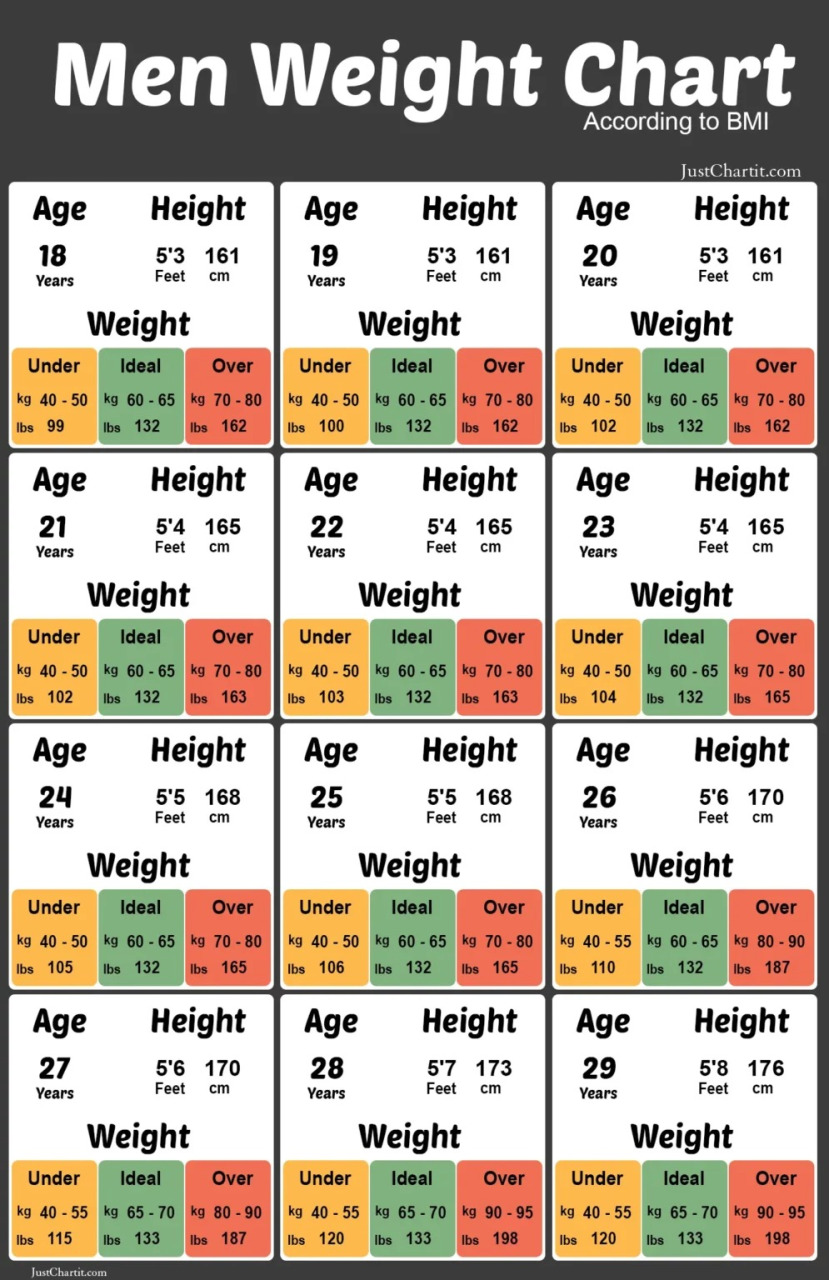A Comprehensive Guide to Men's Weight Charts
As a health-conscious individual, maintaining an ideal weight is crucial for overall well-being. The Weight Chart For Men serves as an invaluable tool in this journey, offering insights into healthy weight ranges based on age, height, and body composition. In this article, we'll delve into the significance of these charts and how they can guide you toward a healthier lifestyle.
Why Weight Charts Matter
Weight charts, particularly those based on BMI (Body Mass Index), provide a standardized method to assess whether your weight falls within a healthy range. BMI calculates your weight relative to your height, offering a quick snapshot of your health. However, it's essential to recognize that BMI doesn't account for factors like muscle mass, bone density, or fat distribution. For instance, athletes with higher muscle mass might have a higher BMI but still be healthy. This is where detailed weight charts become particularly useful.
How to Use a Weight Chart Effectively
To make the most of a weight chart, start by determining your current BMI. You can calculate this by dividing your weight in kilograms by your height in meters squared. Once you have your BMI, compare it to the ranges provided in the chart. If your BMI is within the "normal" range, you're on the right track. If it's higher or lower, consider consulting a healthcare professional for personalized advice.
For a more detailed analysis, explore comprehensive weight charts like the one available at Weight Chart For Men . These charts often break down weight ranges by age and height, providing a clearer picture of where you stand.
Age-Specific Weight Ranges
Weight charts typically categorize weight ranges by age groups. For example, an 18-year-old male should ideally weigh between 60.7 kg and 78.8 kg, while a 25-year-old might have a slightly higher range of 73.0 kg to 96.5 kg. These ranges account for natural variations in growth and development, making them more accurate for different life stages.
Beyond BMI: Factors Affecting Your Weight
While BMI is a useful starting point, it's not the whole story. Factors like muscle mass, fat distribution, and overall body composition play significant roles in your health. For instance, carrying excess weight around your midsection can increase your risk of heart disease, even if your BMI is within the normal range. This highlights the importance of combining BMI with other health metrics like waist circumference and body fat percentage.

Practical Tips for Maintaining a Healthy Weight
- Balanced Diet: Focus on nutrient-dense foods like fruits, vegetables, lean proteins, and whole grains. Avoid excessive processed foods and sugars.
- Regular Exercise: Aim for at least 150 minutes of moderate aerobic activity or 75 minutes of vigorous activity each week.
- Hydration: Drink plenty of water throughout the day to support metabolism and overall health.
- Sleep: Prioritize 7-9 hours of quality sleep nightly, as poor sleep can disrupt hunger hormones and lead to weight gain.
- Stress Management: Practice mindfulness, meditation, or yoga to reduce stress, which can impact eating habits and weight.
When to Seek Professional Help
If you're consistently outside the recommended weight range or struggling to maintain a healthy weight despite your efforts, consult a healthcare provider. They can offer personalized guidance, rule out underlying health issues, and recommend appropriate interventions.
Conclusion
A Weight Chart for Men is more than just a reference—it's a roadmap to better health. By understanding your ideal weight range, monitoring your BMI, and incorporating healthy lifestyle habits, you can work toward a fitter, more energetic you. Remember, everyone's journey is unique, so focus on progress rather than perfection. Start today by checking your weight against reliable charts and taking steps toward a healthier tomorrow.

